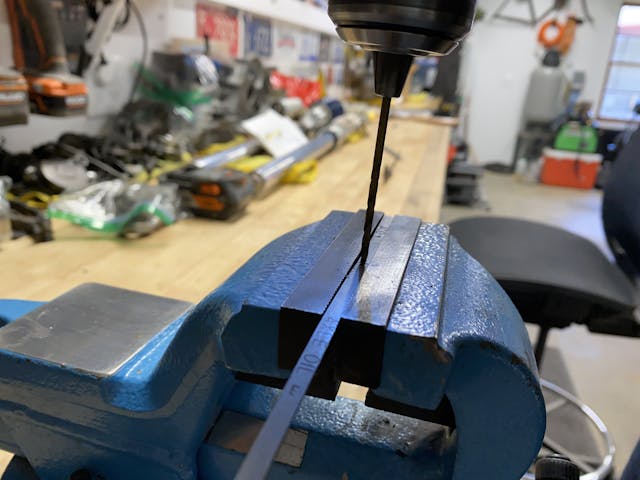Wrenchin’ Wednesday: Modified dipsticks that are quicker and easier to read

The almighty dipstick is vital for keeping your project car alive, especially anything that leaks or burns a little extra between oil changes. While you’ll find that there’s at least one or two dipsticks under the hood of every car, not every one is made equally. The manufacturers all had their own methods for stamping out the simple measuring tool, with some being easier to read than others. Dipsticks have a tricky job of maintaining surface tension with the fluid they’re measuring so that the level in the pan is reflected by where the oil sticks to the dipstick once it’s snaked out of an often-times long access tube, but some OEMs stamped these things out so cheaply that instead the oil marking slides off its reading while extracting the dipstick. So for today’s Wrenchin’ Wednesday, we’ll look at two quick ways to modify what you have so that there’s no second-guessing what’s before your eyes.

While engine oil is usually easy to check, thinner fluids like ATF can be tricky once hot, so adding any extra features to the dipstick serves as a quick and free way to make this maintenance check clearer. The dipsticks on my two projects had already been modified as seen in the photo above, so Associate Editor Kyle Smith was tagged in to provide photos from his ’65 Corsa coupe.
Roughing the surface


The easiest way is to file or sand the dipstick across the width of it, giving the stick a rough surface texture that retains fluid in the horizontal ridges. Even while some dipsticks come from the factory with a checker pattern, the hundreds of tiny scratches allow the fluid to essentially latch into the dipstick, instead of sliding along the top of a smooth surface — think of it as the difference between walking on concrete vs. ice.

If you can catch a fingernail on the ridges, job well done. Don’t be afraid to dig into the dipstick a fair amount either, as long as you retain the level markings it will only help hold the fluid level better.
Sight holes


The next upgrade is to add sight holes on the minimum and maximum marks, which retain fluid in their void and serve as another feature on the dipstick to confirm the level is being read accurately. Because of their small size, center-punching and working up with small drill bits is recommended.

These serve as go/no-go indicators while roughing up the surface helps to add accuracy to the reading between these two dots, which is what tells an experienced owner exactly how low the fluid is – generally, the low and high readings are spaced to represent a quart of fluid in most engines and transmissions, though your project may vary.

Of course, thoroughly clean and deburr the holes so that no shavings get into the sump you’re measuring, but between these two additions, there should be no hesitation on whether or not the readings are accurate.


I have a 2016 Chevy 1500 Automatic transmission and a 5.3 engine. I believe I have too much trans fluid, I will get it hot, switch all the gears an measure again. It goes down the road an acts like it runs out of fluid. Originally, the trans pipe to radiator, fell out on hiway. Lost all fluie. Hope, no damage. Immediately towed it home. Since then I’ve refilled with correct fluid. Original dip stick.
My eyes are bad & I am old; need a good amount of light to read the oil dipstick. Your suggestion to mark the
stick with a file or punch sounds good to me. I will try it and see.